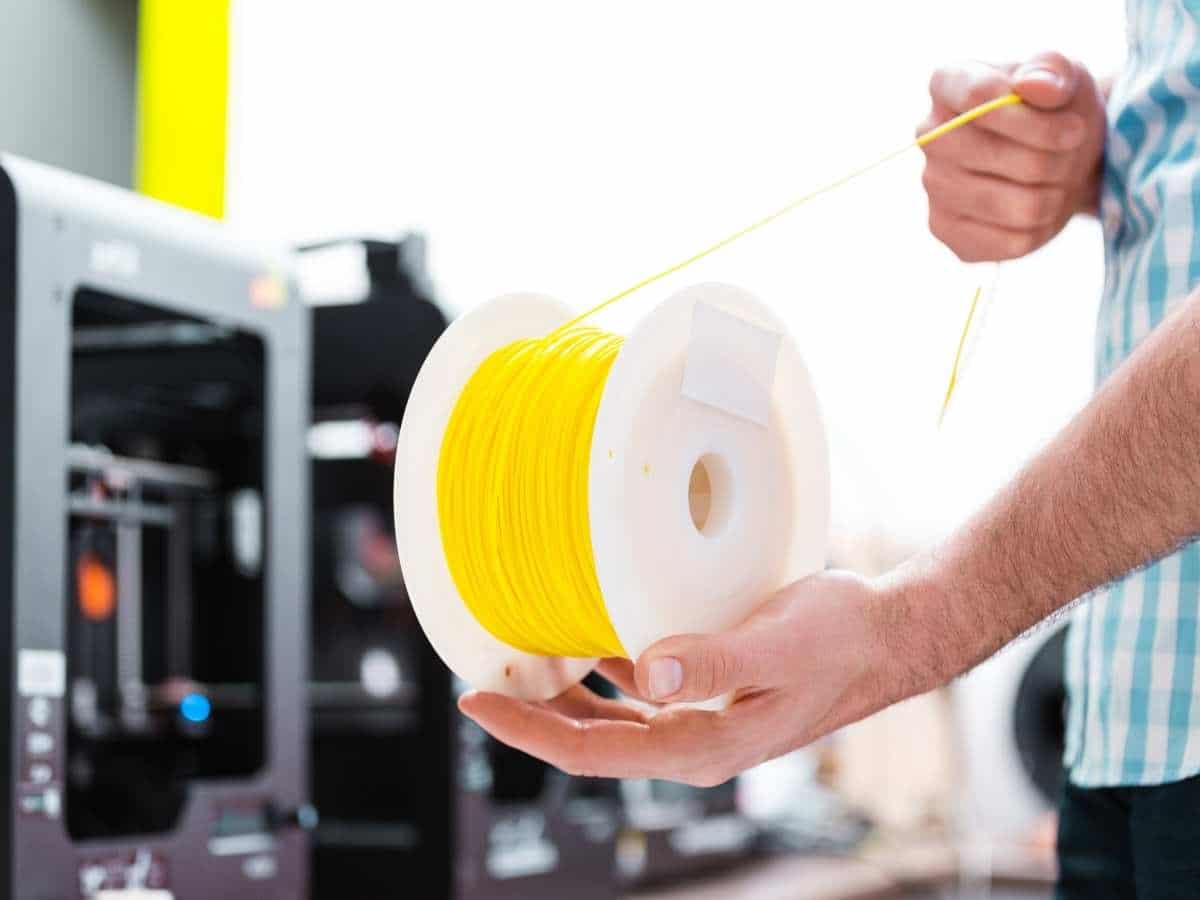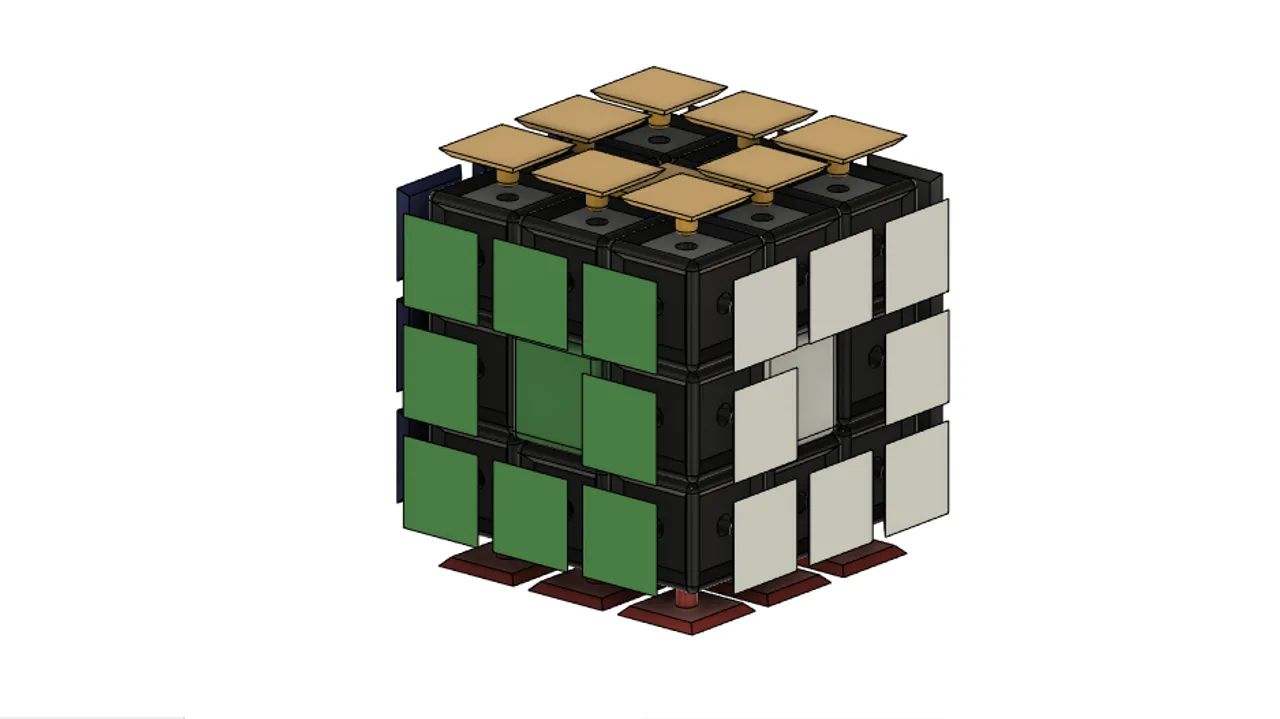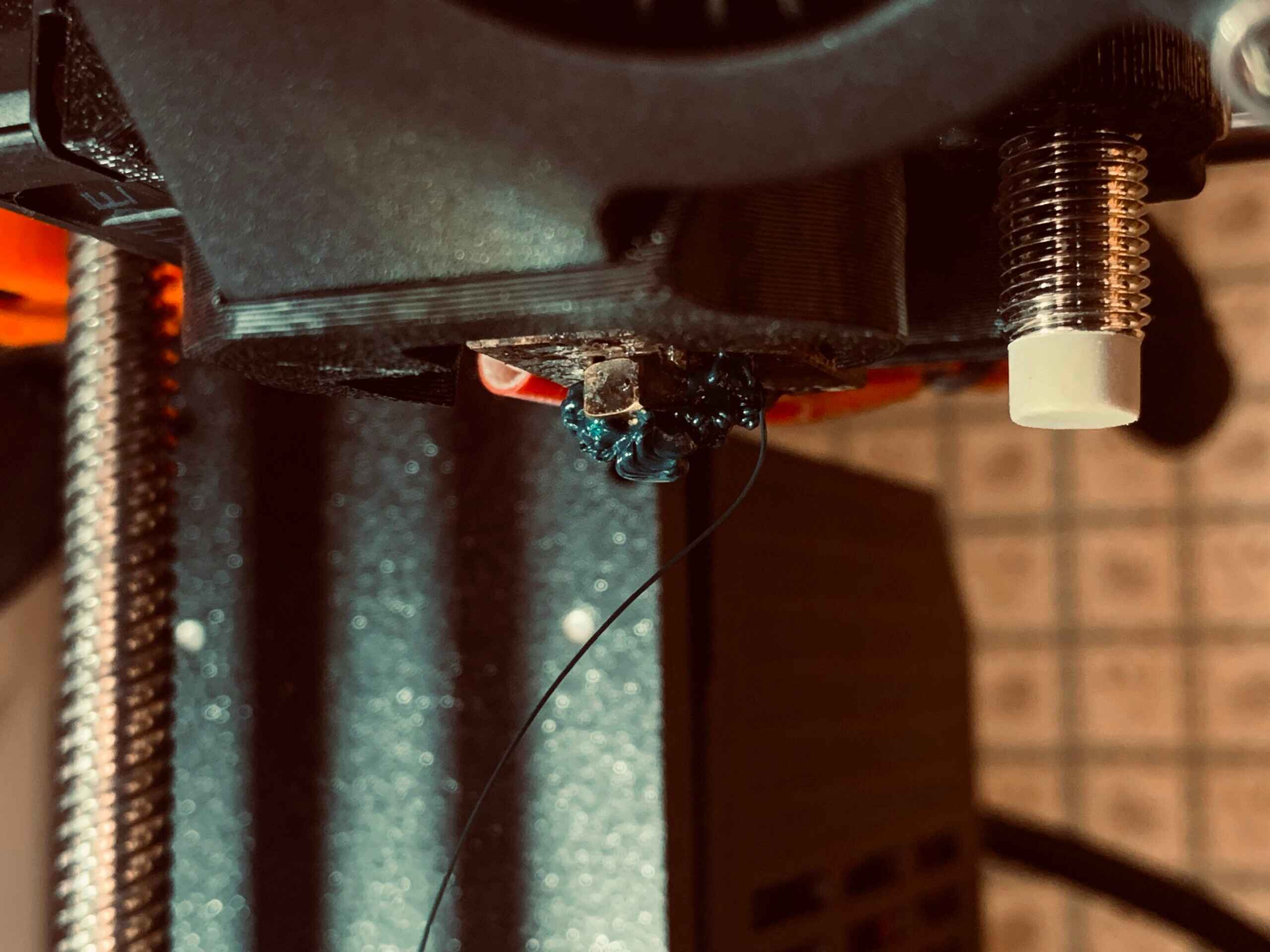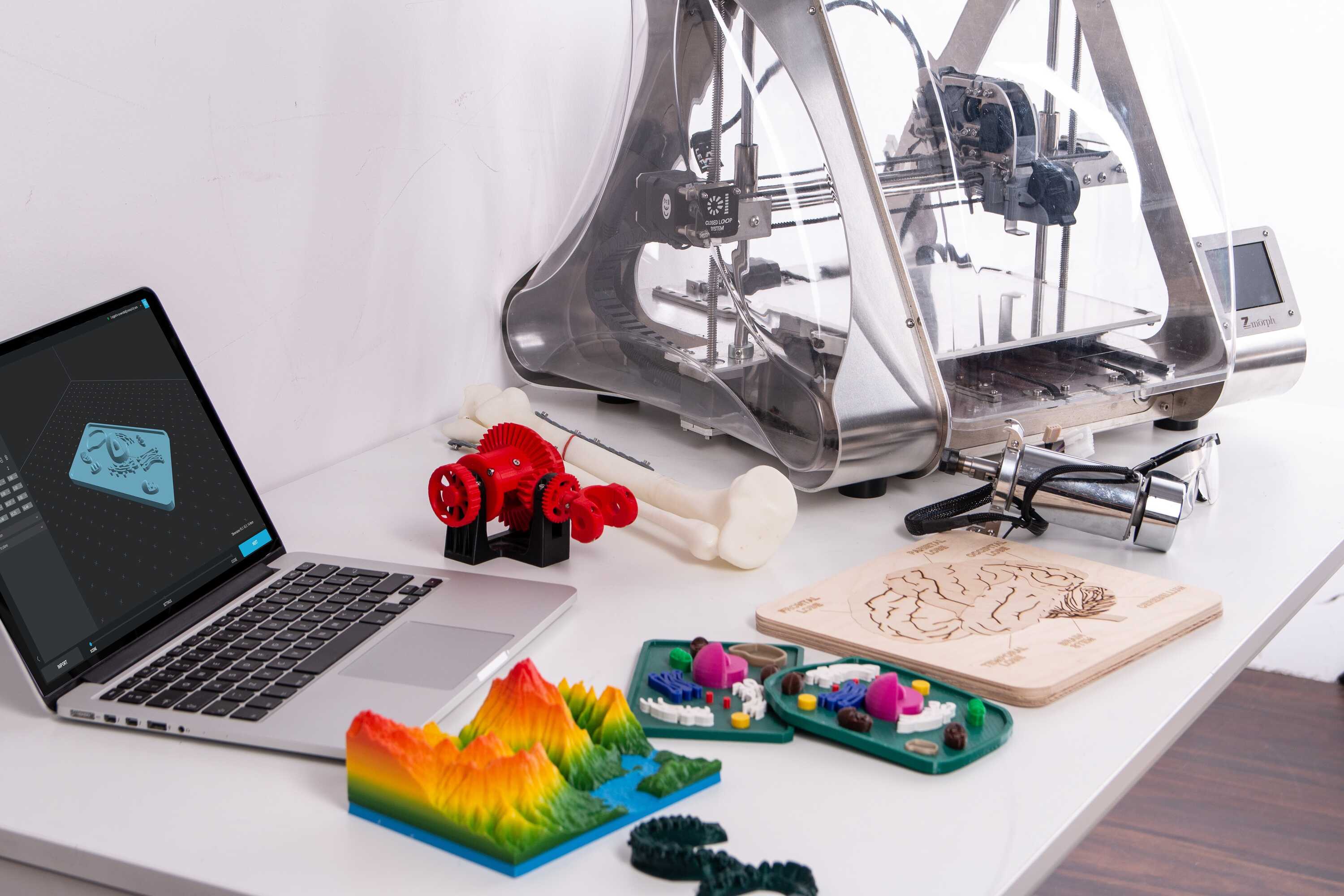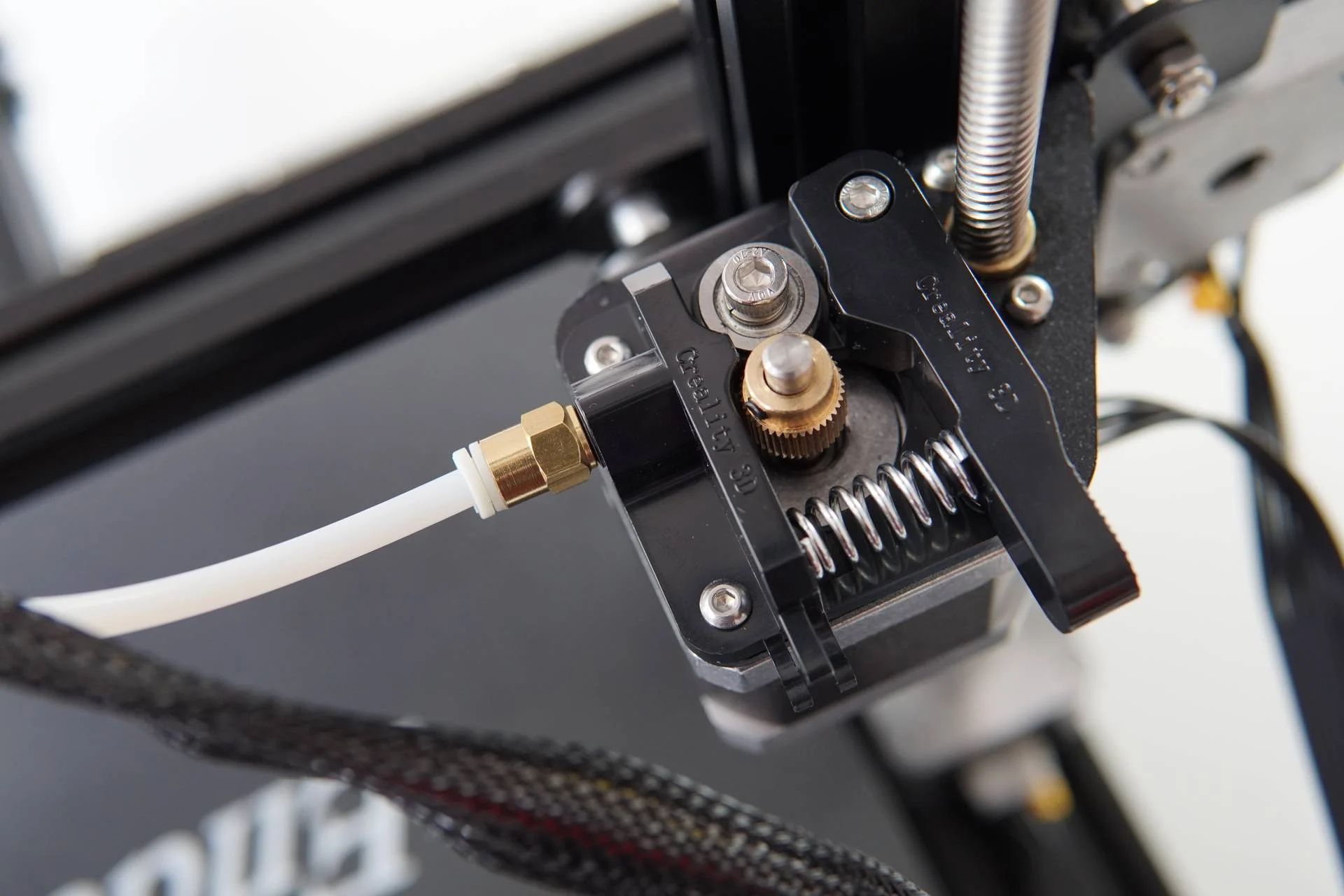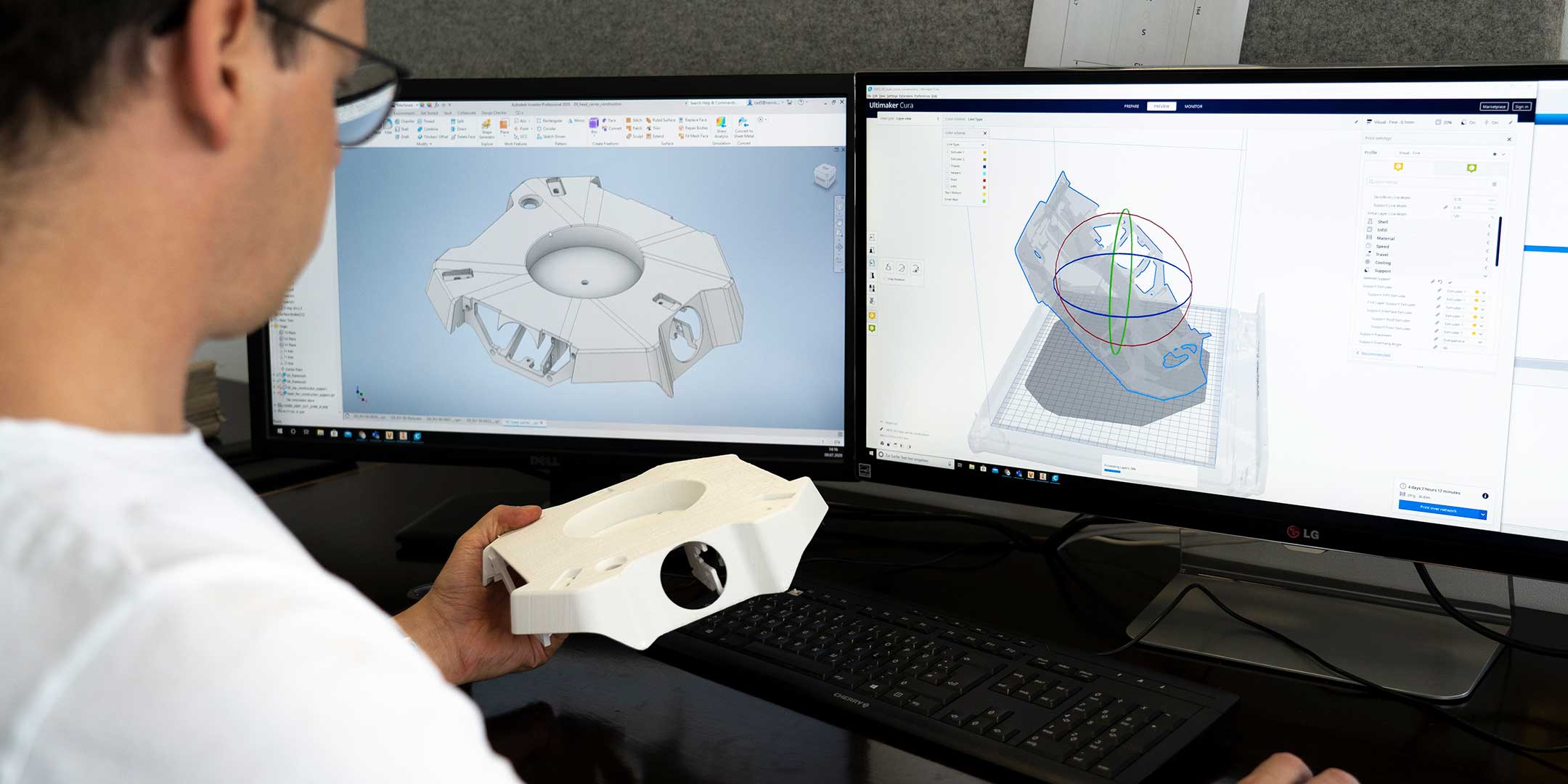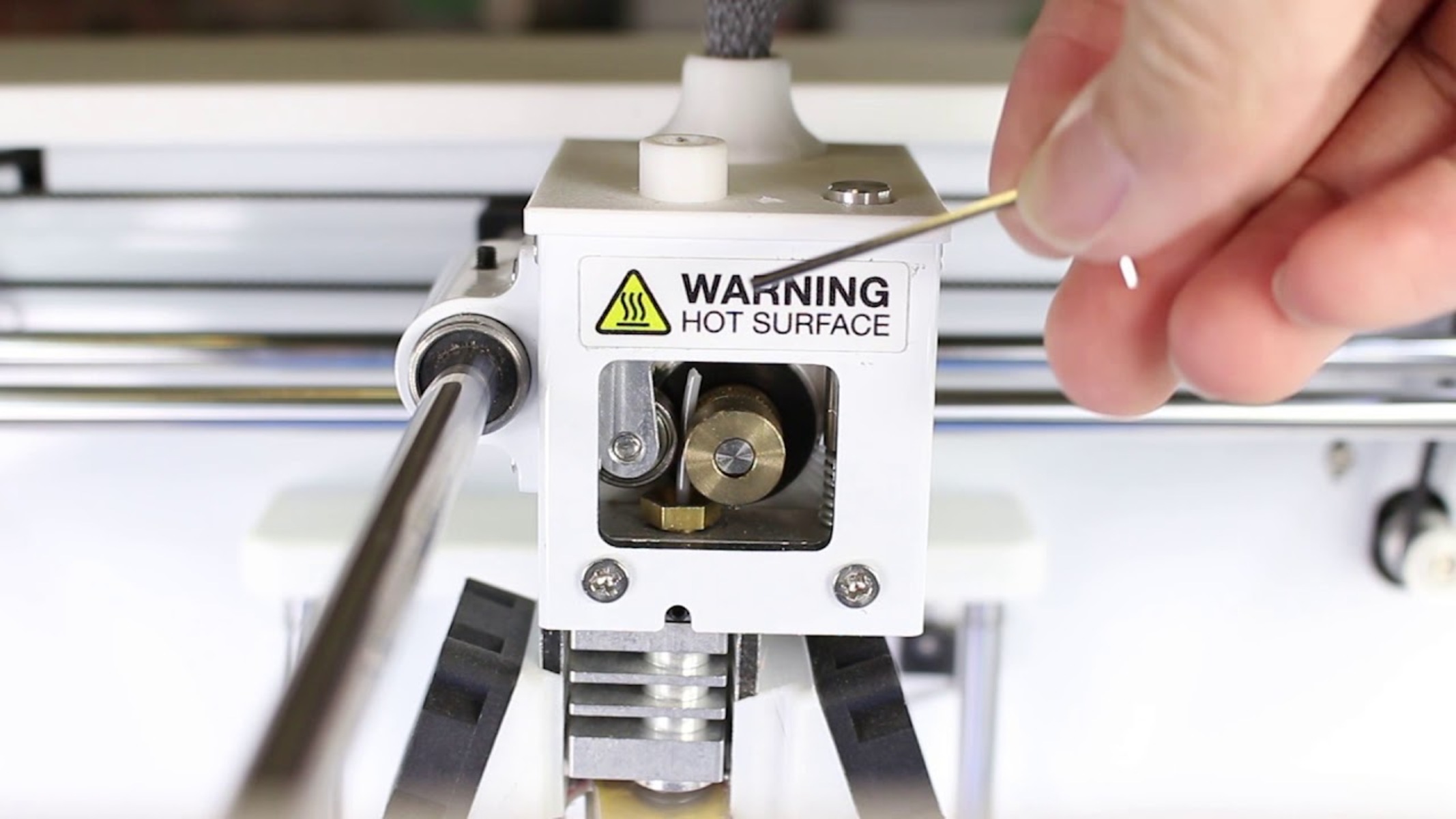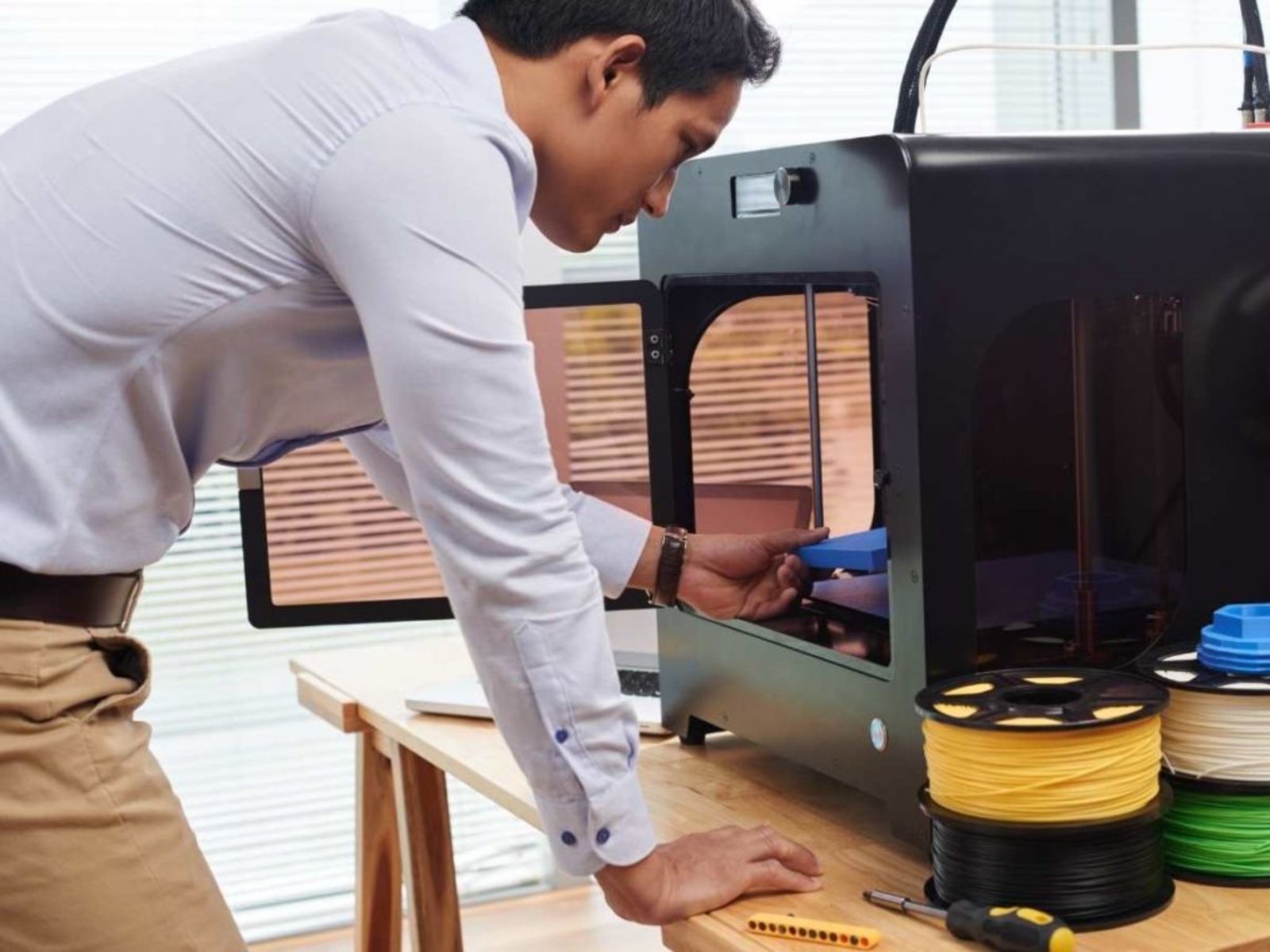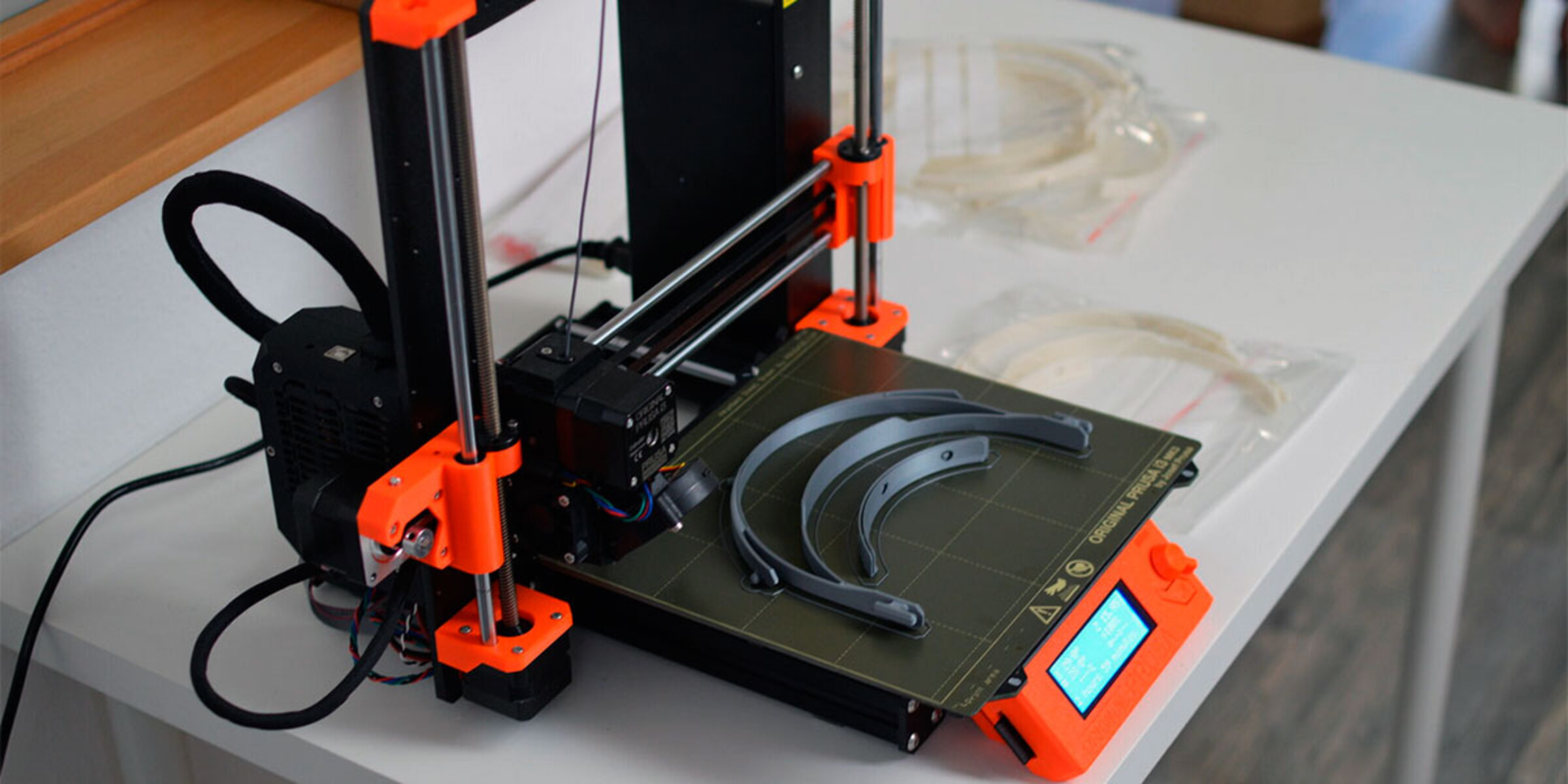Introduction
Welcome to the fascinating world of 3D printing! As you embark on your journey of creating objects layer by layer, it’s essential to understand the various aspects of this innovative technology. One such aspect is filament, the material used by 3D printers to bring your digital designs to life. Filament is the lifeblood of any 3D printing process, as it feeds into the extruder and gets melted to form the solid object.
In this article, we will explore what happens when a 3D printer runs out of filament. We’ll discuss the reasons behind filament depletion, the potential consequences, and practical solutions to address this issue. Whether you’re a beginner or a seasoned 3D printing enthusiast, understanding what to do when you run out of filament is crucial to ensuring a smooth printing experience.
Running out of filament during a 3D printing project is a common occurrence, especially when using smaller spools or printing larger objects that require significant amounts of material. It can happen unexpectedly, leaving you with a partial or incomplete print. But fear not – in the following sections, we will delve into the impact of running out of filament and how to overcome this setback.
Reasons for Running Out of Filament
There are several factors that can lead to running out of filament during a 3D printing project. Understanding these reasons can help you plan and avoid interruptions in your printing process. Let’s take a closer look at some common causes:
- Inaccurate estimation of filament quantity: One of the main reasons for running out of filament is failing to determine the appropriate amount needed for a print. Underestimating the amount required can result in the spool running dry before the print is complete.
- Large prints: Printing larger objects often requires a substantial amount of filament. If you miscalculate the amount needed, you may run out before the print finishes.
- Empty filament spool: Sometimes, running out of filament can simply be a result of not checking the spool’s remaining amount before starting a print. If the spool is empty or has insufficient filament, it will eventually run out.
- Printing with small spools: Using smaller spools of filament significantly increases the chances of running out during a print. These spools typically contain less material, so it’s crucial to keep track of the remaining amount.
- Inconsistent filament diameter: Filament diameter plays a vital role in determining how much material is extruded during the printing process. If the filament used has irregular diameter variations, it could affect the estimated amount, causing you to run out unexpectedly.
Now that we’ve explored the common reasons for running out of filament, it’s important to understand the potential consequences and how they can impact your 3D printing experience.
Effects of Running Out of Filament
Running out of filament during a 3D printing project can have various effects, depending on the stage at which it occurs. Let’s examine some of the possible consequences:
- Incomplete print: Perhaps the most obvious effect is an incomplete print. If you run out of filament before the printing process is finished, you’ll be left with a partially completed object. This can be frustrating, especially if you’ve invested a significant amount of time and effort into the printing process.
- Interrupted workflow: When the filament runs out, the 3D printer will pause, waiting for a fresh supply. This interruption can disrupt your workflow, especially if you’re working on a tight schedule or have multiple projects to complete. It could also lead to uneven printing layers or visible seams when you resume printing with a new filament spool.
- Wasted time and materials: Running out of filament means wasting the time and materials already invested in the print. Depending on the complexity of the object and the duration of the print, this wastage can be significant and have a negative impact on resource management.
- Compromised print quality: If you’re using different spools of filament for a single print job, running out and swapping in a new spool can result in slight variations in color or texture. This may affect the overall appearance and quality of the final object.
- Difficulty in resume printing: When the filament runs out, resuming the print can be challenging. It can be tricky to precisely align the new filament with the previous layers and ensure smooth continuity in the print. This can lead to misalignment, gaps, or even failed prints when attempting to resume.
Understanding the potential effects of running out of filament highlights the importance of addressing this issue promptly. In the next section, we’ll explore the possible solutions that can help mitigate these effects and ensure a successful 3D printing experience.
Damage to the 3D Printer
Running out of filament in a 3D printer can potentially lead to damage to the printer itself. While modern 3D printers are designed to handle filament depletion smoothly, there are still a few instances where issues may arise. Let’s explore some possible scenarios:
- Clogged nozzle: When the filament runs out, the extruder may still attempt to push out filament. However, without a steady supply, the nozzle can become clogged with residual material, causing blockages. This can lead to poor print quality or even damage to the extruder assembly if not addressed promptly.
- Overheating: In some cases, when the filament runs out, the printer may continue to heat the nozzle, thinking that there is still filament being extruded. This prolonged heating can cause the temperature to rise excessively, potentially damaging the hot end assembly or other sensitive components of the printer.
- Belt skipping: If the printer continues to move along the print path without filament being extruded, it can lead to the belt skipping or slipping. This can cause misalignment, resulting in inaccurate prints and potential damage to the printer’s mechanical components.
- Motor strain: When the filament runs out, the motor that feeds the filament into the extruder may continue to run unnecessarily. This can put strain on the motor, possibly leading to overheating or motor failure if not addressed promptly.
- Filament sensor issues: Some 3D printers are equipped with filament sensors that detect when the filament runs out. However, these sensors may not always function flawlessly, leading to improper detection and potential damage to the printer if the filament continues to be fed even when empty.
It’s important to regularly check and maintain your 3D printer to minimize the risk of damage in case you run out of filament. Ensuring proper functionality of filament sensors, regularly cleaning the nozzle, and monitoring the printing process can help prevent any unforeseen issues.
Now that we’ve explored the potential damage that can occur to a 3D printer when running out of filament, let’s move on to discuss the interruption it causes in the printing process.
Interruption of the Printing Process
Running out of filament during a 3D printing project can be disruptive, causing an interruption in the printing process. This interruption can have several implications and delays. Let’s delve into the various aspects of the interruption:
- Pause in printing: When the filament runs out, the printer will pause the printing process, awaiting a fresh supply. This pause can be frustrating, especially if you’re working on a time-sensitive project or have a tight deadline to meet.
- Print job restart: Once you’ve replaced the empty spool with a new one, you will need to restart the print job. However, restarting the print doesn’t guarantee a seamless continuation. You may have to adjust settings, realign layers, or deal with minor inconsistencies in the print due to the interruption.
- Incomplete objects: Depending on when the filament runs out, you may end up with incomplete objects. This can be disappointing, especially if it happens near the end of a print. In such cases, you may need to decide whether to discard the incomplete object or attempt to salvage it through manual finishing.
- Printing inconsistencies: In some instances, when the printing process is interrupted, it can result in inconsistencies or defects in the print. The change in filament or the pause in printing can create visible differences, such as gaps or layer shifts, compromising the overall quality of the object.
- Loss of time and resources: The interruption of the printing process due to running out of filament leads to a loss of valuable time and resources. You’ll need to stop, assess the situation, replace the filament, and potentially troubleshoot any issues that arose. This can significantly delay your project and waste both time and filament material.
While it’s frustrating to deal with interruptions in the printing process, it’s important to remain patient and tackle the situation proactively. In the next section, we’ll explore the possible solutions available when you run out of filament.
Possible Solutions When Running Out of Filament
When you run out of filament during a 3D printing project, there are several solutions available to help minimize the impact and get you back on track. Let’s explore some possible strategies:
- Estimate filament quantity: Before starting a print job, accurately estimate the amount of filament required. Consider the size of the object, filament diameter, and any potential wastage. This will help you avoid running out of filament mid-print.
- Keep spare filaments on hand: Maintain a stock of spare filaments of different colors and types. This way, if you run out of one filament, you can quickly switch to another without delaying the printing process.
- Utilize filament sensors: If your 3D printer is equipped with a filament sensor, ensure it is properly calibrated and functioning. These sensors can help detect when the filament is about to run out and pause the printing process automatically, allowing you to replace the spool and continue without major interruptions.
- Monitor the printing process: Regularly monitor the progress of your print job, especially if it is a long or intricate project. Keep an eye on the filament spool to anticipate when it may run out. This way, you can be prepared to pause the printing process manually and replace the spool before it runs completely empty.
- Splice filament: In some cases, if you realize you’re about to run out of filament, you can manually splice the remaining end of the old filament with a new one. This technique involves heating the ends, pressing them together, and ensuring a secure connection. However, note that this method may result in a visible seam or slight color variation in the final print.
- Resume printing: If you do run out of filament and need to pause the print, consult your 3D printer’s control panel or software to find the option to resume the print. This feature allows you to pick up where you left off, avoiding wasted time and materials. Take care to align the new filament properly with the existing layers to ensure a seamless continuation of the print.
By implementing these solutions, you can effectively manage the situation when running out of filament and prevent unnecessary delays in your 3D printing projects.
Now that we’ve explored the possible solutions, let’s move on to discuss preventive measures to help you avoid running out of filament altogether.
Prevention Measures to Avoid Running Out of Filament
While running out of filament during a 3D printing project can be frustrating, there are several preventive measures you can take to minimize the chances of it happening. By implementing these measures, you can ensure a smooth and uninterrupted printing process. Let’s explore some prevention tips:
- Calculate filament requirements: Take the time to accurately calculate the amount of filament needed for your print job. Consider factors such as the object’s size, filament diameter, and any potential wastage. This will help you determine the appropriate amount of filament to have on hand before starting the print.
- Invest in larger spools: Consider using larger spools of filament, especially for longer or more complex print jobs. Larger spools contain more filament, reducing the chances of running out. This is particularly beneficial when working on projects that require a substantial amount of material.
- Monitor filament levels: Regularly check the remaining filament levels on your spools. This can be done visually or by utilizing filament sensors if your 3D printer has them. Stay vigilant during long print jobs to anticipate when the filament is running low and plan for a timely replacement.
- Keep spare filaments handy: Always have spare filaments readily available. This ensures that you have a backup in case you do run out unexpectedly. Keeping a variety of filament types and colors on hand gives you the flexibility to switch seamlessly between materials when needed.
- Inspect filament quality: Before using a filament spool, inspect it for any defects or irregularities. Check for inconsistencies in diameter and ensure the filament is not tangled or damaged. Using high-quality filament reduces the risk of running into issues during the printing process.
- Plan for overnight prints: If you’re working on a print job that will take several hours or overnight, consider scheduling it when you can actively monitor the progress. This allows you to address any filament depletion issues promptly and avoid interruptions or incomplete prints.
By applying these prevention measures, you can significantly reduce the likelihood of running out of filament during your 3D printing projects. Take the time to plan, monitor, and stock up on filaments to ensure a smoother and more efficient printing experience.
Now that we’ve explored the preventive measures, let’s summarize the key points discussed in this article.
Conclusion
Running out of filament during a 3D printing project can be a frustrating setback, but it’s a situation that can be addressed effectively with the right knowledge and preparation. In this article, we explored the reasons for running out of filament, the potential effects on the printing process, and the possible damage to the 3D printer itself.
We discussed various solutions to overcome filament depletion, such as estimating filament quantity accurately, keeping spare filaments on hand, utilizing filament sensors, monitoring the printing process, splicing filament, and resuming prints. These strategies can help minimize the impact of running out of filament and ensure a successful printing experience.
Additionally, we emphasized the importance of taking preventive measures to avoid running out of filament altogether. Calculating filament requirements, investing in larger spools, monitoring filament levels, keeping spare filaments handy, inspecting filament quality, and planning for long print jobs are all essential practices that can help prevent interruptions in the printing process.
By implementing these recommendations, you can enhance your 3D printing workflow, minimize wastage of time and materials, and achieve better print quality. Remember to stay vigilant, plan ahead, and maintain a proactive approach to ensure a smooth and rewarding 3D printing journey.







